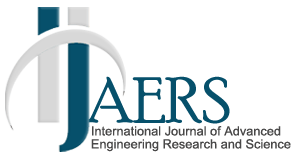An Artificial Lightweight Aggregate Based on Non-ferrous Metallurgy Slags |
| ( Vol-5,Issue-10,October 2018 ) OPEN ACCESS |
| Author(s): |
Huseyn Mammadov, Irada Suleymanova, Tahirov Bahadur |
| Keywords: |
|
artificial porous aggregate, density, strength, expansion temperature, high-strength lightweight concrete. |
| Abstract: |
|
This paper relates to the obtaining of an artificial porous aggregate from slag waste of non-ferrous metallurgy. The developed technology permits to widen raw stuff basis of producing artificial porous aggregates for lightweight concretes. The investigations have demonstrated that granulated slags which are a by-product and are obtained through making non-ferrous metals, can be utilized as a basic starting raw material for manufacturing an artificial porous aggregate. From the results of the investigations expansion intervals of a mass based on the studied slags of metallurgical plants are determined. The technology of obtaining an artificial porous aggregate with the prescribedphysico-mechanical characteristics has been worked out. The main physico-mechanical characteristics of the produced aggregate have been studied. It has been revealed that the obtained artificial porous aggregate meets the requirements of the acting standard GOST 9757-90 “Gravel, Crushed Stone and Sand, Artificial Porous†by its physico-mechanical characteristics. It is found that the strength of the obtained aggregate 1.5-2.0 times exceeds that of the well-known aggregate- keramzit gravel. Using porous sand lightweight concrete of B7.5-B40 strength class with density of 1100-1600kg/cu.m has been produced on the base of the obtained gravel and high-strength lightweight concrete of strength class B25-B50 with density of 1500-1800 kg/cu.m has been manufactured with the use of dense sand and plasticizing additives. |
|
|
| Paper Statistics: |
| Cite this Article: |
| Click here to get all Styles of Citation using DOI of the article. |
- Track Your Paper
- editor.ijaers@gmail.com
- ISSN : 2349-6495(P) | 2456-1908(O)



Advanced Engineering Research and Science